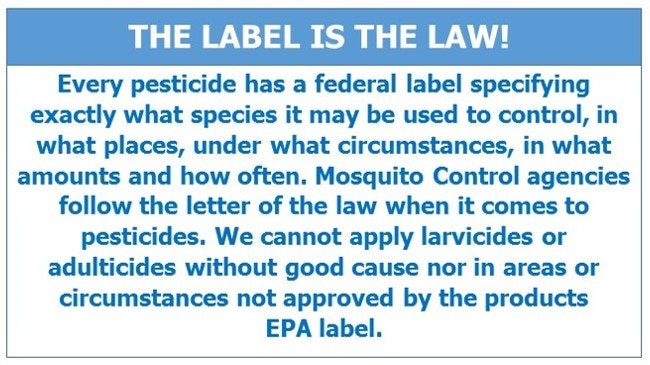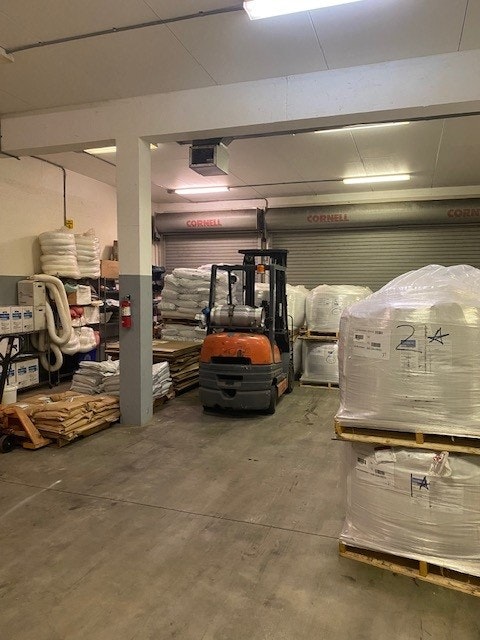Products Used
The District uses several different chemicals for larval and adult control as part of its Integrated Pest Management program.

Larvicides
Agnique MMFAltosid XRGAltosid SR-20Arosurf MSFAquabac_XTCensorNatular G30Natular SCNatular T30Natular DTSummit BTI GranulesVectobac GSVectobac 12ASNone of these larvicides bioaccumulate in the environment. They kill the mosquito larvae present at the time of application and then rapidly decompose. If a heavy rain occurs a few days after treatment with these larvicides there is no alternative but to treat once again.
The larvicides are used in liquid form by the ground and granular form by air. Ground treatments are typically conducted using ATVs, which are equipped with a tank of larvicide. Aerial treatments are performed by a subcontractor using an Air Tractor 802.
Adulticides
DibromFyfanon ULVFyfanon EWKontrol 30-30Permanone 30-30Delta-GuardAdulticides are used in liquid form by ground and air. Ground treatments are typically conducted using spray trucks or hand-held foggers. Aerial treatments are performed by a subcontractor during widespread mosquito outbreaks or a medical emergency when there is a threat to the public of a mosquito-transmitted pathogen (e.g. St. Louis encephalitis or West Nile). "Dibrom" is reserved for broad-scale aerial applications in case of disease threat or massive infestations; "Permethrin" and "Malathion" what we normally use in our ULV spray trucks.

